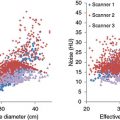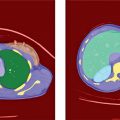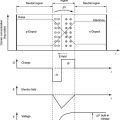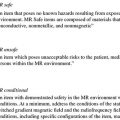Introduction: The Role of Imaging in Medicine Medical imaging is an indispensable component of modern medical science and practice. It is uncommon to diagnose or treat a medical condition without taking advantage of medical imaging because of the incredible level of anatomical and functional details that the medical images reveal about the human body. The intrinsic properties of biological tissues vary spatially and temporally in response to structural and functional changes, including those caused by disease or disability, and medical imaging can reveal such changes. This permits the accurate and prompt delineation and characterization of the disease or disability. Alternatively, definitive information about the disease can be made available through surgical procedures, but surgery is obviously much more invasive and thus practically prohibitive. Instead, medical imaging has created a virtual window into the body, fostering a better scientific comprehension of its mysteries, enabling the investigation of underlying causes of medical symptoms through diagnostic processes, and aiding in disease treatment through proper targeting and monitoring. One key advantage of medical imaging lies in its foundational format. As the body is an incredibly complex system, one of the major challenges for both research and clinical care is the comprehension of its vast quantities of information in such a way that it can be assimilated, interpreted, and utilized. Medical imaging is widely used and highly beneficial in both the laboratory and the clinical settings because of its innate ability to capture and present information as images: an image is one of the most efficient approaches to condense a vast amount of information into a comprehensive format. At the same time, imaging provides a significant depth of quantitative information that can be deciphered through computational analyses. Naturally, research and clinical care have different immediate aims and thus use imaging differently, but both are significantly advantaged by this condensation quality of medical imaging. To appreciate the role of imaging in modern medicine, it is helpful to consider the historical context and the importance of physics principles. In the 1800s and before, physicians were extremely limited in their ability to obtain information about the illnesses and injuries of patients. They relied essentially on the five senses, and what they could not see, hear, feel, smell, or taste usually went undetected. Even these senses could not be exploited fully because patient modesty and the need to control infectious diseases often prevented full examination of the patient. Frequently, physicians served more to reassure the patient and comfort the family rather than to intercede in the progression of illness or facilitate recovery from injury. More often than not, fate was more instrumental than the physician in determining the course of a disease or injury. The twentieth century has witnessed remarkable changes in the physician’s ability to intervene actively on behalf of the patient. These changes have dramatically improved the health of humankind around the world. In developed countries, infant mortality has decreased substantially, and the average life span has increased from 40 years at the beginning of the century to beyond 70 years for most people today. Many major diseases, such as smallpox, tuberculosis, poliomyelitis, and pertussis, have been brought under control, and some have been virtually eliminated. Diagnostic medicine has become commonplace, and therapies have evolved for cure or maintenance of persons with a variety of maladies. How did such progress come about? In this progress of modern medicine, medical imaging has been a significant contributor by offering diagnostic probes to identify and characterize problems in the internal anatomy and physiology of patients. Medical imaging has been instrumental in moving the physician into the role of an active intervener in disease and injury and has a major influence on the prognosis for recovery. In November 1895, Wilhelm Röntgen, a physicist at the University of Würzburg, was experimenting with cathode rays. These rays were obtained by applying a potential difference across a partially evacuated glass “discharge” tube. Röntgen observed the emission of light from the crystals of barium platinocyanide some distance away and recognized that the fluorescence had to be caused by the radiation produced by his experiments. He called the radiation “X-rays” and quickly discovered that the new radiation could penetrate various materials and could be recorded on photographic plates. Among the more dramatic illustrations of these properties was a radiograph of his wife’s hand (Figure I.1) that Röntgen included in early presentations of his findings [1]. This radiograph captured the imaginations of both scientists and the public around the world [2]. Within a month of their discovery, X-rays were being explored as medical tools in several countries, including Germany, England, France, and the United States [3]. Figure I.1: A radiograph of the hand taken by Röntgen in December 1895. His wife may have been the subject. Two months after Röntgen’s discovery, Henri Poincaré demonstrated to the French Academy of Sciences that X-rays were released when cathode rays struck the wall of a gas discharge tube. Shortly thereafter, Henri Becquerel discovered that potassium uranyl sulfate spontaneously emitted a type of radiation that he termed Becquerel rays, now popularly known as β particles [4]. Marie Curie explored Becquerel rays for her doctoral thesis and chemically separated a number of elements. She discovered the radioactive properties of naturally occurring thorium, radium, and polonium, all of which emit α particles, a new type of radiation [5]. In 1900, γ-rays were identified by Paul Ulrich Villard as a third form of radiation [6]. In the meantime, J.J. Thomson reported in 1897 that the cathode rays used to produce X-rays were negatively charged particles (i.e. electrons) with about 1/2000 the mass of the hydrogen atom [7]. Within five years of the discovery of X-rays, electrons and natural radioactivity had also been identified, and several sources and properties of the latter had been characterized. Over the first half of the twentieth century, X-ray imaging advanced with the help of improvements such as intensifying screens, hot-cathode X-ray tubes, rotating anodes, image intensifiers, and contrast agents. These improvements are discussed in subsequent chapters. In addition, X-ray imaging was joined by other techniques that employed radioactive nuclides and ultrasound beams as energy sources for imaging. Through the 1950s and 1960s, diagnostic imaging progressed as a symbiosis of X-ray imaging with the emerging specialties of nuclear medicine and ultrasonography. This coalescence reflected the intellectual creativity nurtured by the synthesis of basic science, principally physics, with clinical medicine. In a few institutions, the interpretation of clinical images continued to be taught without close attention to its foundation in basic science. In the more progressive teaching departments, however, the dependence of radiology on basic science, especially physics, was never far from the consciousness of teachers and students. The application of physics to medicine in the 1900s established the foundation for modern medical imaging and enabled the progress observed to date. In the current practice of medical imaging, close concordance with radiologic physics is the foundation of precision and innovation of the operation. Medical imaging is capturing health- and medicine-related information in imagery that is produced through the interrogation of the human body using different sources of energy. Although this definition applies across the broad field of medical imaging, medical imaging comes in different forms, each relying on specific interactions between tissues and incident energy to reveal structural or functional information about the body. Table I.1 lists the mechanisms that enable image formation for various modalities of medical imaging: X-ray, nuclear imaging, magnetic resonance imaging (MRI), and ultrasonography (US). Table I.1 Some of the energy sources and tissue properties captured in medical imaging
I.1 Introduction
I.2 Historical Foundation of Medical Imaging

I.3 What Is Medical Imaging?
Energy sources
Tissue properties
Medical imaging modality
X-rays
![]()
Stay updated, free articles. Join our Telegram channel

Full access? Get Clinical Tree

 Get Clinical Tree app for offline access
Get Clinical Tree app for offline access





